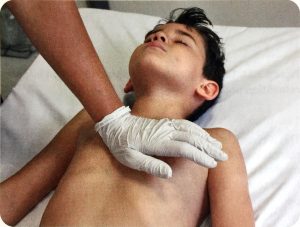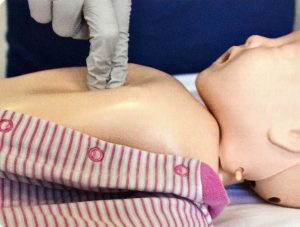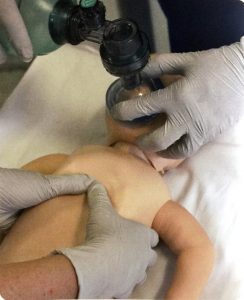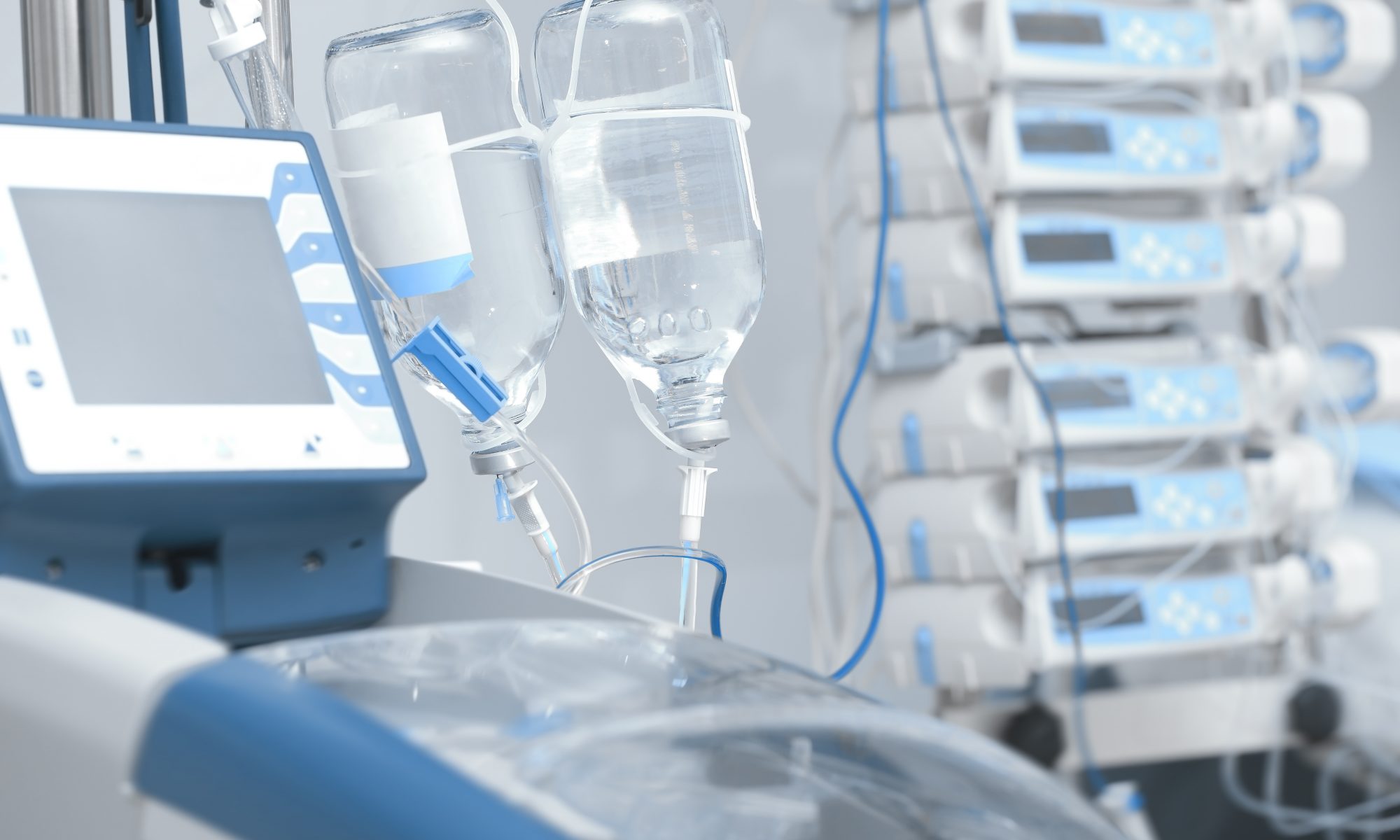Rescuers who have been taught adult BLS and have no specific knowledge of paediatric resuscitation should use the adult sequence.
The following “paediatric modifiers” to the adult sequence will make it more suitable for children:
- Give 5 initial rescue breaths before starting chest compressions
- If you are on your own, perform CPR for 1 minute before going for help
- Compress the chest by at least 1/3 of its depth – approximately 4cm for an infant and 5cm for an older child
- use 2 fingers for an infant under 1 year, use 1 or 2 hands as appropriate for a child >1 to achieve adequate compression
BLS sequence
- Safety
- Stimulate
- Shout for assistance
- Airway
- Breathing
- Circulation
- Reassess
Safety
Check for potential hazards. All bodily fluids should be treated as potentially hazardous.
Look for clues as you approach the child e.g. suspicion of neck injury
Stimulate
Tactile and verbal stimulation
Never shake vigourously.
If they respond, reassess clinical status.
Shout
Airway
Perform a head tilt chin lift (see The paediatric airway).
Perform a jaw thrust is cervical spine immobilisation is required (see The paediatric airway)
Breathing
Look, listen and feel whilst maintaining an airway opening manoeuvre.
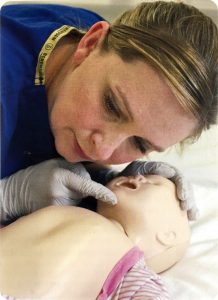
If the child is breathing normally and effectively, maintain the airway opening manoeuvre whilst help is being summoned.
Unless contraindicated (e.g. suspicion of spinal injury), the unresponsive child who has effective spontaneous breathing should be placed in a safe side-lying position.
If the child is not breathing normally, or is gasping ineffectively, immediately give 5 rescue breath. Deliver each breath slowly (e.g. over 1 second).
If chest movement is not observed, reassess the airway.
Circulation
After the initial 5 resuce breaths, determine whether the child has an adequate spontaneous circulation.
The time taken to assess the circulation should not exceed 10 seconds.
In infants the recommended sites for central pulse check are the femoral or brachial artery.
In children the recommended sites for central pulse check are the femoral or carotid artery.
If there are no signs of life, start chest compressions immediately, unless the rescuer is certain there is a pulse of >60 beats / min.
if there are signs of life and / or a pulse is found (>60 beats/min), reassess breathing. If breathing is absent or inadequate, continue rescue breathing at a rate of 12-20 / min
Chest compressions
The recommended ration of chest compressions to ventilation for infants and children is 15:2.
The rate should be 100-120 / min.
During the relaxation phase, release pressure whilst leaving the hands / fingers in position on the chest.
Deliver chest compressions over the lower half of the sternum – compress 1 finger’s breadth above the xiphisternum.
The two finger technique is recommended for infants for the lone rescuer (see image).
The two-thumb encircling technique is recommended with two or more rescuers – it provides greater cardiac output but is difficult for a single rescuer to perform and deliver rescue breaths
